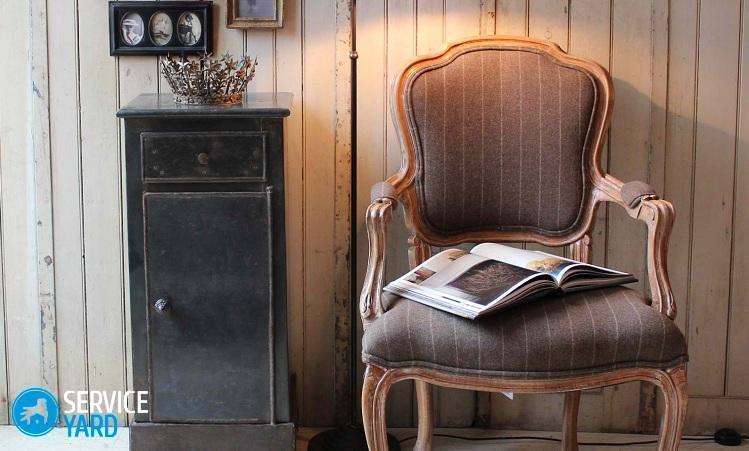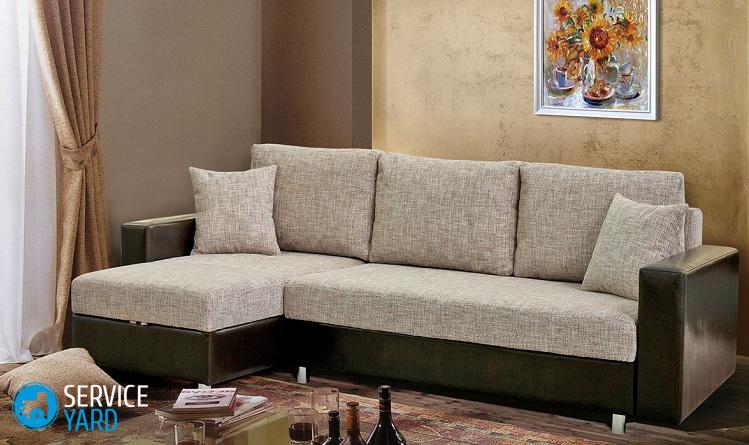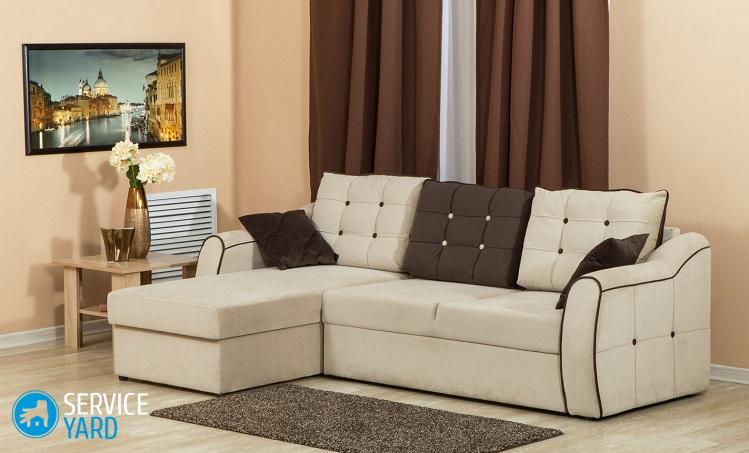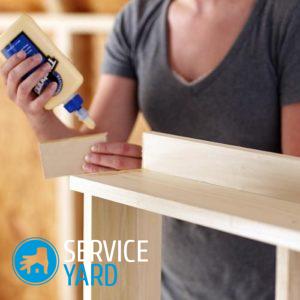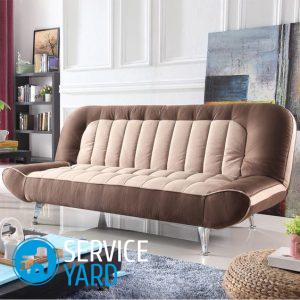DIY furniture hauling
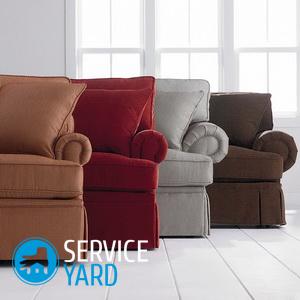
It is sad, but over time, the upholstery of your favorite chair or sofa can go bad. This is most often faced by pet owners, because pets like to use furniture as a scratching post. Quite quickly, the upholstery loses its original appearance even if there are small children in the house. They can not only dine on the couch, but also use it as a canvas for their work. Someone, faced with such a problem, solves it simply - old furniture is sent to a landfill. But someone is unable to part with such a beloved and comfortable chair, in addition, buying new furniture is not a cheap pleasure. Therefore, in our article we will consider such a question as hauling furniture with your own hands.
to contents ↑Is it worth taking the job yourself?
Now even in the smallest city you can find companies that provide services for the hauling of furniture. Right at your place. But such a service is quite expensive. And let's see how difficult it is to do the constriction of upholstered furniture with your own hands:
- If your sofa and chairs are a simple design, without curly elements, then the task initially becomes easier.
- If the surface of the kit is decorated with quilted fabric or edging, pleats or draperies - get ready for difficult work. You will need to exactly repeat all this decor.
- Difficulties with self-constriction can also occur if the upholstery is made of leather or some other complex material, which is extremely difficult to work with.
to contents ↑Important! If you have an expensive antique chair, then it is better to abandon the idea of covering the furniture with your own hands. By repairing it yourself, you can significantly reduce the cost of a rarity. In this case, it is more reasonable to call for help from a professional restorer.
Instruments
Restoring upholstered furniture with your own hands is impossible without tools. Therefore, before starting work, prepare:
- Phillips screwdrivers and flat-tip tools of various calibers;
- Allen keys (if you are repairing sufficiently new furniture that is not from the Soviet past);
- nippers;
- side cutters;
- special furniture stapler;
- furniture glue;
- Upholstery nails (regular and with decorative caps);
- accessories for sewing.
to contents ↑Important! Keep in mind that do-it-yourself restoration of upholstered furniture is not an easy task. Schedule day 2 for this job. In addition, if you will be processing upholstery with special tools, you need to wait time until the surface completely dries.
Materials
For the constriction of furniture with your own hands, you will need several types of materials. The first is the actual material of your upholstery. Then you need to choose the foam layer that is necessary for the thickness, since, most likely, you will also have to change it. You can’t do without rough rough fabric, which fits the filler and serves as a kind of understudy for the main fabric.
Consider how to deal with all this:
- As the main fabric, it is better to choose dense materials - velor, tapestry, jacquard are suitable. You can consider the option of upholstery from the flock.
Important! It is desirable that the fabric be monophonic, without a complex pattern and patterns - so the upholstery will look better and it is easier to stitch it.
- If the fabric has any pattern or ornament, then it should be correctly placed on the upholstery in such a way as to look good on furniture.
- If you chose such a fabric, you will need to take into account the direction of the pile when stitching, so that then the left armrest is not darker than the right because the villi look in different directions.
- The fabric doubler when hauling upholstered furniture with your own hands can be any, the main thing is that it be dense and slightly rough. Usually they take inexpensive tweed or greta as a basis, which will last quite a long time.
Important! As practice shows, upholstery of a chair will require about 5 meters of material, for a chair - 2-3 meters. The exact consumption of fabric can be calculated after drawing up patterns.
A little more nuances when choosing foam mats, which will be covered with upholstery:
- Thicker options are suitable for the seat - 35-46 units.
- For sidewalls, you can purchase thin ones - 25-30 units.
- High-quality foam must have a porous and elastic structure. The bubbles in it are small, and when pressed with a finger, such material straightens out quickly, a dent disappears without a trace.
Important! If you want to give a tougher base when restoring upholstered furniture with your own hands, then get not one thick sheet of softener, but 2 thinner ones. And during installation, lay them with a layer of felt. Seats with such a base last much longer.
- The softener is usually sold in a vacuum package, which reduces its thickness by several times. Before starting work on the hauling of furniture, free the foam rubber from polyethylene and let it rest for 1-2 days.
- When choosing foam, pay attention to such characteristics as rigidity and density. Better choose averages. It will be uncomfortable to sit on very tight, too thin - will quickly take over and will require replacement.
to contents ↑Important! Buy all materials for the restoration of upholstered furniture with your own hands with a margin. This will be necessary in order not to sew individual rags or run into the store in the midst of work and be faced with the fact that the fabric you need is over.
Furniture disassembly
Before you start hauling upholstered furniture with your own hands, it is recommended that you first take a picture of the disassembly process in order to assemble all the parts back correctly. Moreover, this advice is better to use at each stage, all in all there will be several:
- Dismantling into components, removal of the side and rear backs, legs, pillows.
- Dismantling worn elements (upholstery and softeners).
- Cutting and preparing new parts.
- Mounting new upholstery on separate parts of furniture.
- Final assembly of the finished structure.
All connections must be dismantled very carefully, taking care not to damage the frame:
- If the bolts or screws are rusted, then do not try to break them, but use a special fluid to remove corrosion.
- In order to remove the old brackets, pick up the plywood sheet with a flat screwdriver and lift it, being careful not to break the plywood. After the fasteners are loosened, they can be removed.
- Try to unscrew the screws, not pull them out of the wood.
Important! If the fasteners are suitable for further use, then assemble them in a box specially designed for this purpose. But in any case, when hauling upholstered furniture with your own hands, it is more reasonable to replace old fasteners with new ones.
- The brackets securing the old trim to the furniture frame, pick up a flat screwdriver or the tip of a clerical knife. Loosen the foot, and only then remove the bracket. Try not to damage the upholstery, as it will serve as a pattern for the new workpiece in the future.
to contents ↑Important! Do not just cut the upholstery, leaving staples with a strip of fabric on the furniture. They will prevent you from securely fixing the new material and can ruin the updated appearance of a chair or sofa. In addition, rust on old fasteners can appear through new upholstery with indelible stains.
Frame repair and troubleshooting
When you take off your old, worn upholstery, you may find more serious traces of time. Details of a sofa or chair may also become deformed or broken. Take your time to give up and throw away furniture. First, carefully study our tips for repairing upholstered furniture at home with your own hands.
Cracked frame beams
Most of the furniture is made on frames fastened with locks and glue. The design is strong and reliable, but with time it can also become unusable. Frame angles may become loose and cracked. In this case, it is worth changing the entire beam. For these purposes:
- Take dried material, without knots and bark - bast or middle with an even straight structure, durable and solid. Only in this case, the beam will withstand a large load, otherwise it will quickly burst again.
- Drying of the material should be carried out in special chambers at the factory. At home, where there are no necessary conditions, a raw tree will simply dry out and deform.
- It’s better not to change the castle drink, but to take it off and take it to the nearest workshop so that you can make it exactly the same.
- Docking the beams when installing new parts, impregnate the joints with PVA glue - this will increase the strength of the entire structure.
Broken hardboard parts
When restoring upholstered furniture with your own hands, you can find another common defect. Large loads can not withstand lining-jumpers of the seat frame and backrest. If you find such breakdowns, you should not be upset:
- Make accurate measurements of worn parts.
- Order them in the workshop or cut out new ones with a jigsaw.
- Put the parts in place with nails or a stapler.
Important! Professionals recommend stocking up on separate parts of jumpers. If one of them breaks, then it will only be necessary to replace it, and not the entire structure.
Springs
A sore spot is the middle of the seat, where the children so much like jumping and sitting. Some craftsmen manage to “twist” the spring blocks, replacing the bursting ones with new ones. However, there is no guarantee that after some time another old spring will not break, and for the sake of it you will not have to start all the work again. Therefore, it is more rational to replace the spring blocks completely.
Important! Typically, the frames of the seats and backs of old armchairs are pulled together by intertwined wide belts on which foam rubber is laid. Belts are very rarely torn - most often the joint between the belt and the frame is wiped. Replace any belts that you think are strong. The main thing is that they be tightly woven, preferably from synthetic materials and a width of at least 5-7 cm.
Cured foam rubber
Any grade of foam rubber has such a technical characteristic as the number of compressions. This is an indicator of how many times the material will withstand compression and will be able to restore its original shape and elasticity.
Almost always in old furniture, foam rubber has long outlived itself by this parameter and has turned into dust or a viscous substance resembling sticky plasticine. Therefore, when hauling furniture with your own hands, throw away such material without regret and lay new foam rubber.
Lock Replacement
Also a common problem that is encountered when repairing upholstered furniture at home with your own hands is castles that have become unusable:
- Over time, the steel mechanism of the lock becomes loose, a play appears in it or springs fly off, snap the lock into the “sitting” or “lying” position.
- If this is the reason, simply change the screw or adjust the new latch spring.
- If the matter is in the castle itself, then it is better to change it. Today - this is not a problem; in furniture hardware stores you will be offered a large selection of modern locks.
Patterns
Before you do the upholstery of furniture with your own hands, the store fabric must be washed and ironed. After wet-heat treatment, it will shrink and lie flat on the surface.And we don’t throw out the old fabric - on its basis we will make a pattern:
- Weakened upholstery we pass the iron to smooth all creases and folds. This will allow you to accurately repeat the dimensions.
- Then we apply the details to the new material and circle with chalk or a thin bar of soap.
- Add 1 or 3 cm to the existing allowances for seams. This value depends on the thickness of your new upholstery.
- We cut blanks by cutting the fabric exactly along the lines.
Stitching new parts is in the same order as the old ones were dissolved in order to exactly repeat all the contours:
- It is advisable to process the resulting seams on the overlock or with a zigzag stitch so that the fabric does not crumble and does not open.
- Upholstery fabric with a large pile in the process of hauling upholstered furniture with your own hands before machine stitching needs to be swept away manually to avoid displacement of parts and so that the pile does not fall into the seam, otherwise you will get ugly joints.
- If imitation leather, artificial or genuine leather is chosen for upholstery, then use a special roller as the presser foot of the sewing machine when performing facial finishing seams. In extreme cases, you can smear the surface of the fabric under the foot with a thin layer of machine oil. Only then your seams will turn out equal and identical.
- If decorative overlays are sewn into the cover, all the folds must first be sewn manually.
- As often as possible in the sewing process, try on. Foam rubber is a very voluminous material. If you neglect this advice, then your new case may not fit in size.
Often, when restoring upholstered furniture, one has to pull the fabric not only on the frame, but also on the pillows. Therefore, we will dwell on this moment in more detail:
- Measure the height, width and length of the pillows. These parameters will be needed for the pattern.
- Repeat the contours on paper or immediately on a new fabric. The main thing - do not forget to add 5 cm for allowances. Then cut the parts.
- Then, straighten the old upholstery, turn its front side down, lay a pillow on it and tuck the fabric on all sides so that it lies flat against the pillow.
- After that, fix the result - fix it with furniture nails to the sofa frame. The distance between the sofa brackets should not be more than 4 cm. To make things easier, it is recommended to fix the fabric in several places, then you should fix the opposite edge of the fabric, which is not processed.
Important! Remember that the fabric must be tightened tightly and gradually, otherwise, the result will be worse than you expected. In addition, from poor-quality pulling, the fabric deteriorates.
In the same way, hauling upholstered furniture with your own hands on other pillows is done. By the way, it can be applied to the remaining parts of a sofa, armchair or other furniture.
to contents ↑Do-it-yourself furniture hauling - master class
Consider a few more options for updating furniture, so that you accurately imagine the entire amount of work in different situations.
Chair restoration
Professionals advise to start their journey as a restorer with something less ambitious than a sofa. For example, from a dining chair or pouf. They spend less time and materials. And the fear of spoiling something is not so great:
- First, we disassemble our chair or stool for details. If you want to change the trim and the seats and backs, first unfasten them from the base. Remember to remove the staples from the old upholstery.
- Then we are taken for the drawings. This will require 3 measurements - height, width and length. Separately measure the backrest, a separate seat.
- If the seat of your chair is oval, then take measurements at the most prominent points.
- On a piece of paper we build a pattern that will follow the contours of your furniture.
When the pattern is ready, we do the hauling of furniture with our own hands according to the following instructions:
- We lay the part on the foam rubber, outline its contours, carefully cut it out.
- Next, we cut the same part from the main and draft materials.
Important! Marking is better on the wrong side. Do not forget to increase the hem - as a rule, it equals the height of the seat + 7-9 cm.
- First, we take a part from foam rubber, apply it to the back or to the seat, if necessary - align the edges. Then we attach it to the base with glue.
- Next, apply a layer of draft fabric. We wrap the edges inward, providing a snug fit to the foam, we also fix it with glue.
- All work is done from the center to the edges. So the material will be tensioned sufficiently and the surface will be perfect.
- We work with the basic material in the same way.
Important! The same algorithm for repairing upholstered furniture at home with your own hands should be repeated already for the fine fabric, but staples from a large stapler become a fastener. In the end, they are knocked out with a hammer so that they do not accidentally fly out. Excess material, if any, needs to be cut.
To facilitate the process of fixing the finishing fabric with staples, you can use a simpler algorithm:
- First, pull the material and fasten it in the center on each opposite side, working crosswise - above and below, and then on the sides.
- After that, moving away from the center, add 1 bracket to each side, constantly keeping under control the tissue tension. This work scheme allows you to avoid distortions of the fabric and get a flat surface.
to contents ↑Important! When you finish the constriction of upholstered furniture with your own hands, you should cost the finished surface with a special preparation that protects it from external influences and leave it to dry for 24-36 hours. After that, the parts are screwed back to the chair.
Stock footage
As you can see, such a task as hauling upholstered furniture with your own hands, everyone can do it. The main thing is to strictly follow the instructions and take into account the nuances that professionals are willing to share. And do not forget to “rehearse” on smaller furniture to avoid mistakes.



